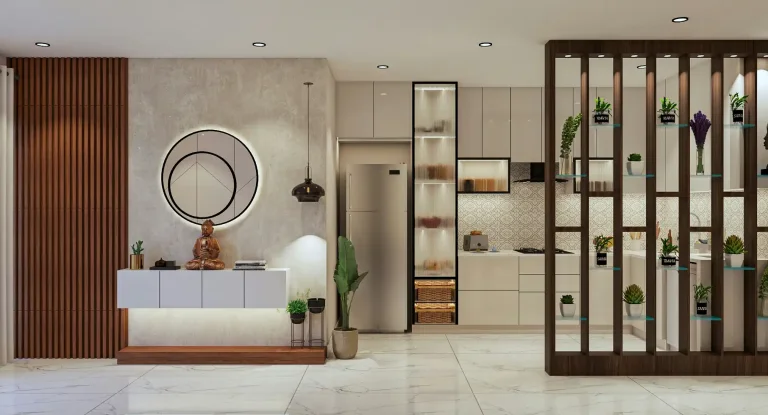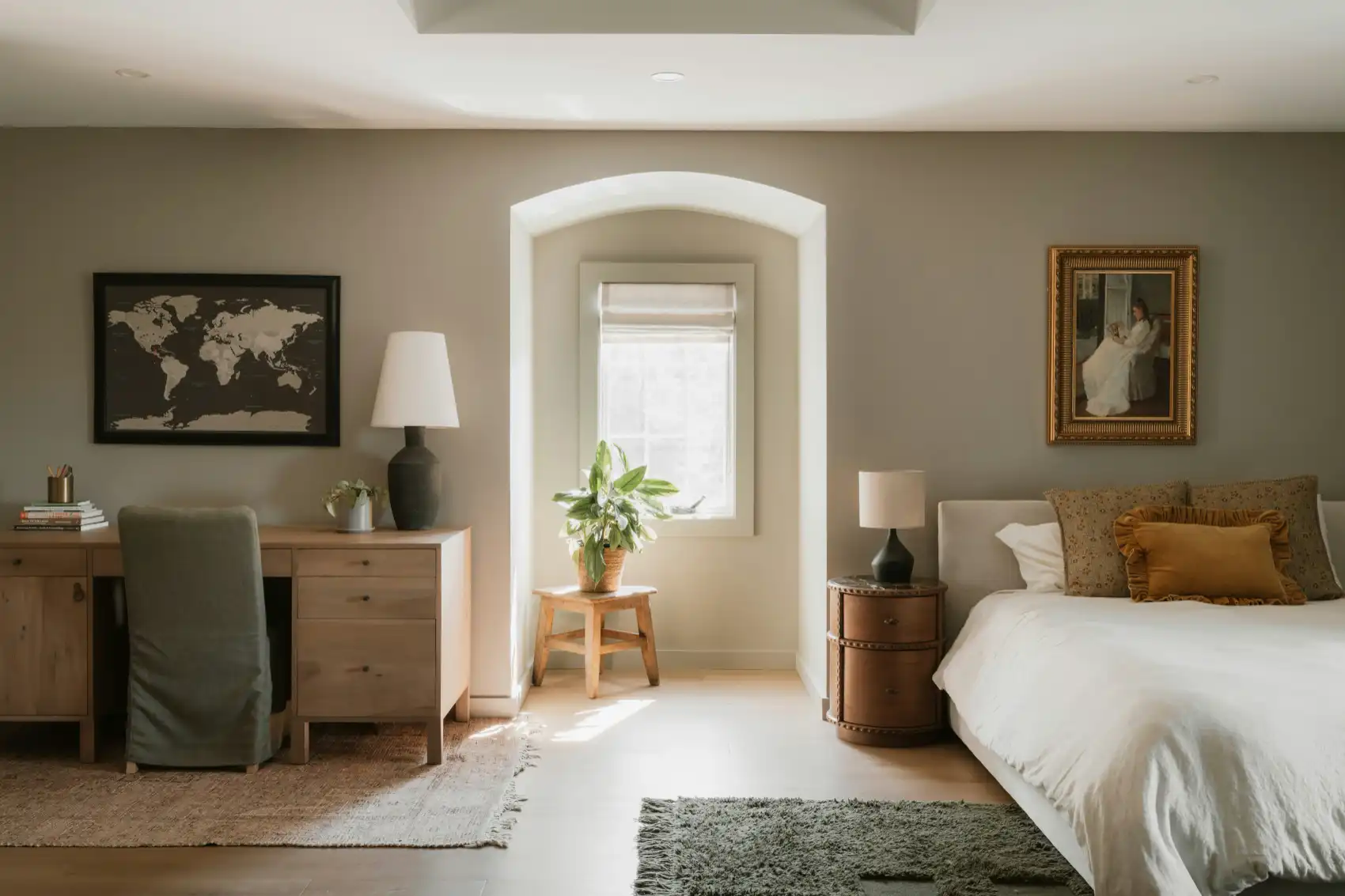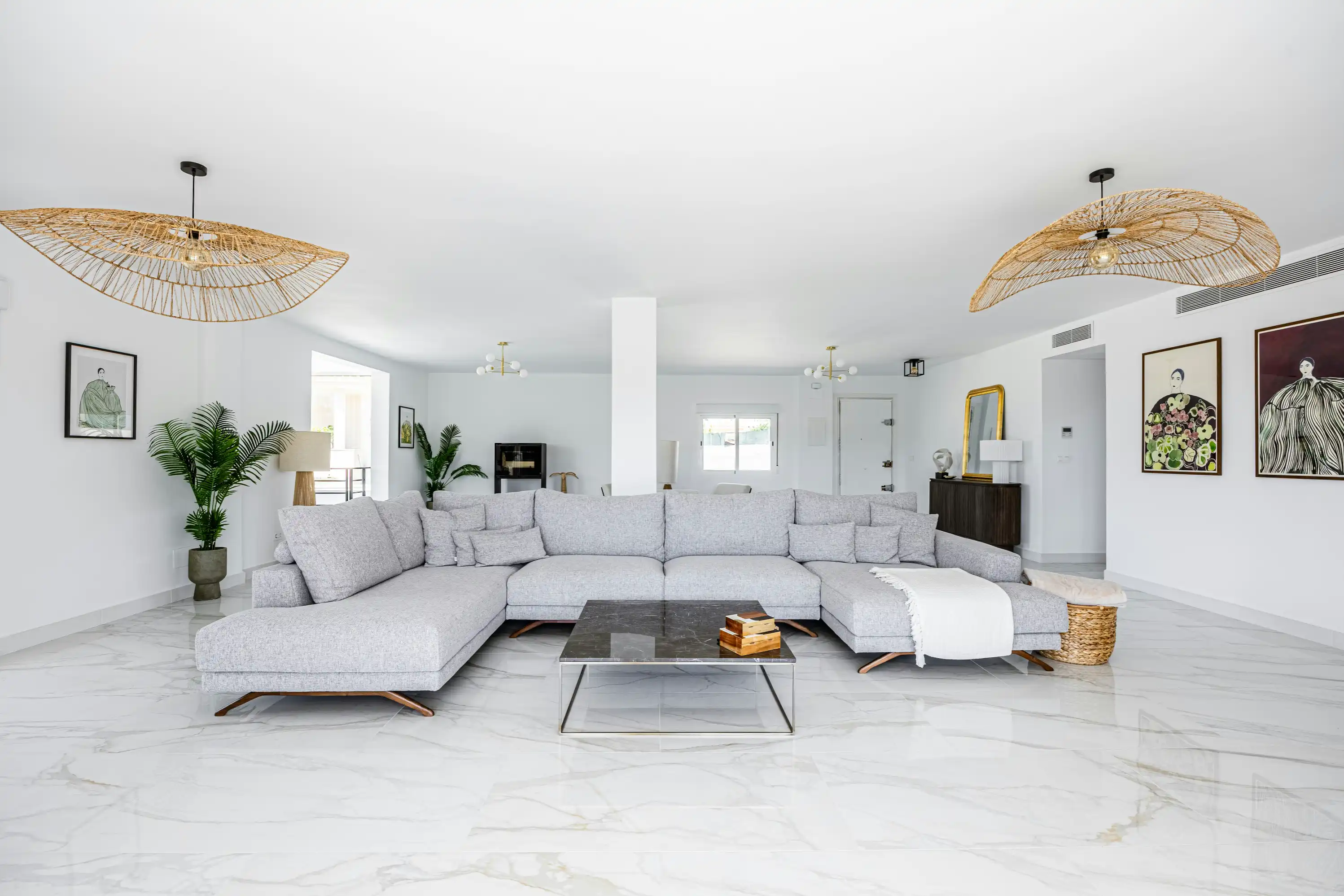How to Create an Airbnb Mood Board (with Examples)
You've spent hours scrolling through well-staged Airbnb listings, admiring their color schemes and arranged furniture. Yet for your own short-term rental (STR), something's missing. Your property looks "nice" but blends into the sea of similar listings, failing to command the rates or bookings you know it deserves. The difference between an average and exceptional STR often isn't just better furniture; it's having a cohesive vision from the start.
An Airbnb mood board becomes a foundational business document. A strategic mood board serves as the visual blueprint for your property's identity, guest experience, and financial performance, more than a collection of images.
In this guide, we'll walk you through creating a mood board that acts as the cornerstone of a high-earning STR. A well-researched mood board is the first step in crafting a memorable guest experience that leads to more bookings, higher nightly rates, and standout reviews that keep your calendar full year-round.
Why Your Airbnb Needs Strategic Design
When designing your home, personal preferences take center stage. An STR is different; it's a product for a specific consumer. Your design decisions aren't about what you like; they're about what will resonate with your target guests and motivate them to book.
Visual branding for your Airbnb is crucial. Just as successful companies build recognizable brands, your property needs a cohesive visual identity that tells a compelling story and promises potential guests. A well-crafted mood board ensures consistency from the first listing photo to guests’ checkout.
The business impact of strategic design is substantial and measurable:
- "Scroll-stopping" listing photos that capture attention in milliseconds while users browse dozens of options.
- Instagrammable moments throughout the property encourage guests to share their experience, providing free marketing.
- A distinctive atmosphere that justifies premium pricing compared to generic competitors
- Design elements chosen to attract your ideal guest demographic
This isn't just theory. At STR Cribs, we've seen how a strategic approach to vacation rental interior design yields incredible results:
- Up to a 64% increase in occupancy rates
- Average daily rates
- $50,000 more in annual revenue than comparable properties
These transformations come from performance properties, not just aesthetics.
Step-by-Step Guide to Creating Your Strategic Airbnb Mood Board
Now that you understand the business significance of a strategic mood board, let's translate these principles into actionable steps. This exercise will clarify your vision and ensure alignment with those executing it, even if you decide to work with professionals. You can create your mood board digitally (recommended for flexibility) or physically (beneficial for tactile elements like fabric samples).
Step 1: Define Your Core Concept & Target Guest
This foundational step connects directly to the research above. Write a clear sentence that defines your property's theme and ideal guest. This statement becomes your North Star for every design decision.
Examples:
- "A tranquil, minimalist retreat for remote professionals seeking focus and rejuvenation away from urban distractions."
- *A vibrant, family-friendly basecamp for creating magical memories between theme park adventures.*
- "A sophisticated urban oasis offering luxury hotel amenities in a more personal, homelike setting for business travelers."
Be specific. "Nice house for vacationers" isn't a concept. It's a generic description that leads to generic design.
Step 2: Choose Your Platform (Digital vs. Physical)
Digital Options:
- Pinterest: Ideal for the initial collection phase. Create a secret board to gather inspiration without publishing your ideas. Use specific search terms beyond "Airbnb design" – try "desert modern interior," "coastal grandma aesthetic," or "industrial loft style" based on your concept.
- Canva: Ideal for organizing your ideas into a structured presentation. Their mood board templates allow you to arrange images, include color hex codes for future reference, and add notes about materials or concepts.
- Milanote or Moodboard: These tools offer more flexibility for complex projects, allowing organization and annotations.
Physical Options:
A corkboard or foam core board lets you pin actual material samples, paint chips, and fabric swatches. This tactile approach helps you understand real-life texture interactions.
Take photos of your physical board from different angles and lighting conditions for digital reference when shopping or communicating with contractors.
Step 3: Gather Your Foundational Elements
Start by collecting 5-10 core images that capture your concept's essence. These images are not necessarily photos of furniture you'll buy; they are images that evoke the desired feeling and atmosphere. When searching for STR design inspiration, focus on emotional response rather than specific items.
Extract from these core images:
- Color Palette: Choose 3-5 defining colors. Follow the 60-30-10 rule: 60% of the space will feature your dominant (often neutral) color, 30% your secondary color, and 10% your accent color. Include the exact paint names or hex codes on your mood board for reference.
- Textures & Materials: Look beyond color to the tactile elements that add dimension and quality to a space. Are you featuring warm woods, sleek metals, natural fibers, plush fabrics, or industrial concrete? These decisions impact both photography and the physical comfort of your space.
Step 4: Add Specifics: Furnishings, Lighting & Decor
Now you can specify the actual elements for your space:
- Furniture: Determine the overall style direction (Mid-Century Modern, Bohemian, Contemporary, Traditional, etc.) and find examples of key pieces like sofas, beds, and dining tables that align with this style. Considering aesthetics and practicality, beautiful but uncomfortable furniture leads to poor reviews.
- Lighting: Often overlooked in amateur designs, lighting dramatically affects atmosphere and photography. Include examples:
- Statement lighting (distinctive pendants or chandeliers)
- Task lighting (reading lamps, under-cabinet lighting)
- Ambient lighting (sconces, floor lamps, outdoor string lights)
- Decor & Art: These elements inject personality and complete spaces in photos. Include examples:
- Wall art that reinforces your theme
- Textiles like throw pillows and rugs
- Plants (real or artificial)
- Functional decor like coffee table books or local games
Step 5: Plan Your "Instagrammable Moment"
Every successful STR needs at least one standout feature that guests want to photograph and share. This "Instagrammable moment" serves as free marketing and creates a memorable highlight that distinguishes your property in reviews.
Examples include:
- A custom neon sign with a catchy phrase related to your location
- A perfectly styled coffee or cocktail bar
- An outdoor swing, hammock, or unique seating area with a view
- A dramatic wall treatment, such as bold wallpaper, a mural, or an architectural feature.
- A luxurious bathtub or shower experience
Dedicate a section of your mood board to developing this feature. Collect examples of successful similar concepts on social media.
Step 6: Refine and Edit
The final step is the most important: editing your collection. A strong mood board isn't about including everything you like. It's about creating a focused vision where every element works together.
Review each image against your core concept statement from Step 1 and ask:
- Does this serve my target guest's needs and preferences?
- Does this contribute to a cohesive visual story?
- Is this practical for a rental property (durable, maintainable, cost-effective)?
- Does this help differentiate my property from competitors?
Remove anything that doesn't support your strategic goals, no matter how much you like it. Remember, this is a business decision, not a personal home.
Conclusion
An Airbnb mood board is more than a collection of pictures. It is a strategic tool that transforms your property design approach from guesswork into a calculated plan to increase Airbnb revenue. By aligning your design decisions with market data and guest preferences, you create a property that looks good and performs well financially.
A clear vision is key to unlocking your property's full potential in a competitive marketplace, and it begins a great guest experience.
Are you ready to turn your vision into a top-performing property? Don't leave your investment to chance.






